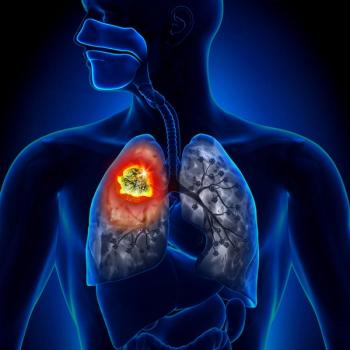
- ONCOLOGY Vol 10 No 8
- Volume 10
- Issue 8
Laparoscopic Ultrasound Probe Provides Important Information During Abdominal Laparoscopic Surgery
Although laparoscopic surgery is a less invasive technique for abdominal surgery, a drawback is the fact that it visualizes only the surface of the abdominal cavity and may miss abnormalities within solid abdominal organs, such as the liver. The use of
Although laparoscopic surgery is a less invasive technique forabdominal surgery, a drawback is the fact that it visualizes onlythe surface of the abdominal cavity and may miss abnormalitieswithin solid abdominal organs, such as the liver. The use of laparoscopicultrasound during laparoscopic surgery offers improved resolution,as the probe is placed directly on the liver surface, rather thanon the skin surface, as in a routine ultrasound examination. Inaddition to providing increased proximity of the ultrasound probeto the organ being examined, laparoscopic liver sonography increasessensitivity for the detection of small lesions and provides bloodflow information when used with color Doppler and duplex Doppler.
In a study conducted by Rick I. Feld, md, and coworkers at theThomas Jefferson University Hospital, the new ultrasound probewas studied in 13 patients who underwent laparoscopic surgery.Each of the patients underwent CT arterial portography (CTAP)prior to surgery.
"In our preliminary series, laparoscopic ultrasound assistedsurgeons in critical decision-making by providing important newinformation, clarifying questionable areas, complementing theresults of CTAP, or providing ultrasound guidance for biopsy,"said Dr. Feld.
The study found that in 31% (4/13) of the patients, laparoscopicultrasound directly influenced surgical management. In 23% ofthe patients studied, laparoscopic ultrasound provided guidancefor biopsy or added important anatomic information. In another23%, laparoscopic ultrasound was found to be complementary toCTAP but added no additional information. In the remaining 23%of cases, laparoscopic ultrasound either added no information(two cases; 15%) or was falsely negative (one case; 8%).
Dr. Feld presented his findings at the American Institute of Ultrasoundin Medicine's 40th Annual Convention held March 20 in New York.
Articles in this issue
over 29 years ago
Deadly Human Parasite Discoveredover 29 years ago
National Program of Cancer Registriesover 29 years ago
Gut Reaction: New Locale for Antibody ActivityNewsletter
Stay up to date on recent advances in the multidisciplinary approach to cancer.


















































































